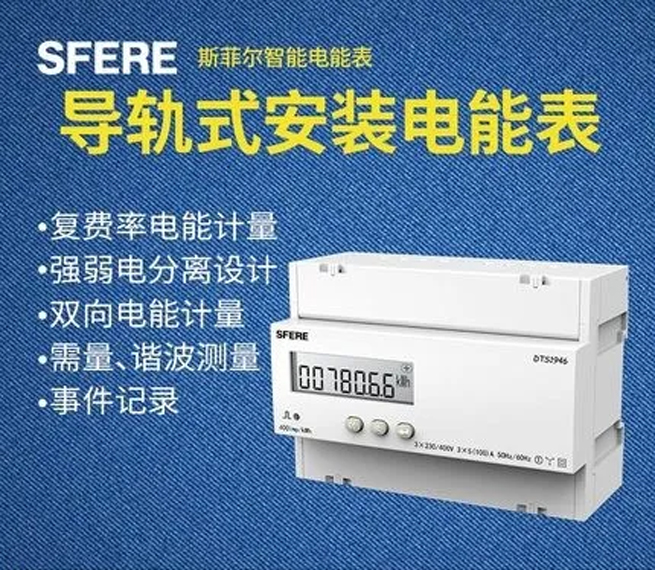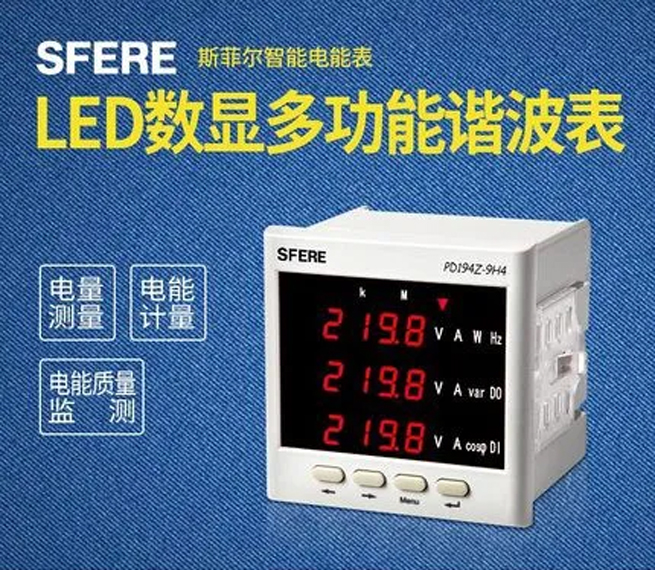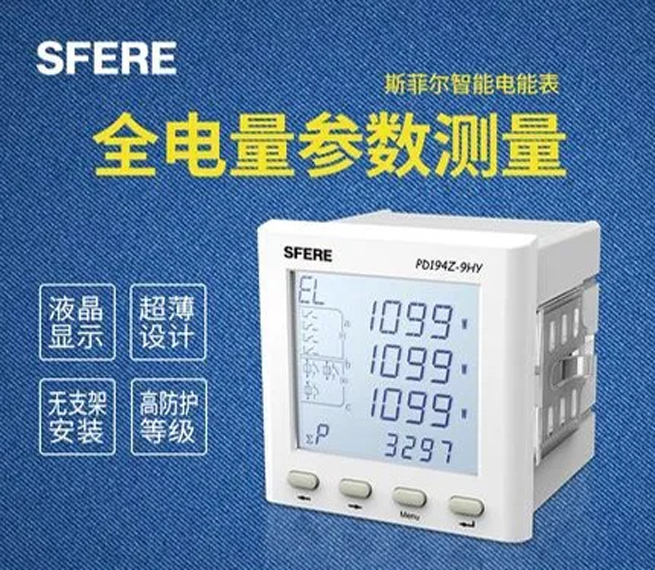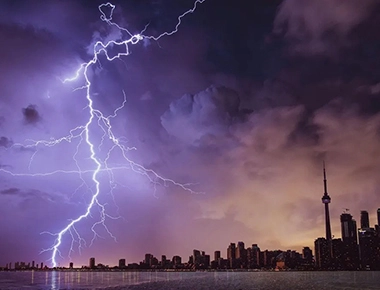From mechanical electricity meters before 1990, to ordinary electronic electricity meters from 1990 to 2005, and then to prepaid electricity meters from 2005 to 2011, and smart electricity meters from 2011 to the present, the stages that China's electricity meter industry has gone through in the past 30 years are believed to be deeply moved by the progress of the times and the development of society. With the construction of "smart grids" and advanced measurement systems worldwide, as well as the advancement of related technologies, smart electricity meters, as their basic components and core equipment, are attracting close attention from a large number of meter manufacturers, IT enterprises, energy suppliers, and national governments. The use of smart electricity meters is becoming more and more widespread, which has also had a more favorable impact on our lives. At the same time, It is also subtly changing our lives.
What is a smart meter?
Smart electricity meters are one of the basic equipment for data collection in smart grids (especially smart distribution networks), undertaking the tasks of raw energy data collection, measurement, and transmission. They are the foundation for achieving information integration, analysis and optimization, and information display.
In addition to the basic electricity consumption measurement function of traditional energy meters, smart meters also have intelligent functions such as bidirectional multi rate measurement function, user side control function, bidirectional data communication function with multiple data transmission modes, and anti electricity theft function to adapt to the use of smart grids and new energy.






Current situation analysis
With the advancement of electricity marketization reform, the intensification of climate change, increasingly strict environmental regulatory requirements, and the latest adjustment of national energy policies, the coordination and exchange between the power network, the power market, and users are becoming increasingly close. The requirements for electricity quality are gradually improving, and the number of renewable energy and other distributed power generation resources is constantly increasing. Traditional power networks are no longer able to support so many development requirements.
In recent years, the industry has been seeking the upgrade and development of smart meters. Starting from 2019, State Grid of China, in conjunction with various industries, has jointly promoted the research and design process of the new generation of smart meters. The first batch of samples of State Grid's new generation of smart meters are expected to be connected to some provincial power grids for operation and product design improvement.
Development trends
Diversified communication methods
In recent years, electricity metering has gradually developed towards digitization and systematization, and traditional smart meters are limited by the requirements of on-site wiring and difficult to transform. With the development of mobile communication, new technologies and applications are gradually maturing. Smart meters are connected to the Internet of Things through NB IoT, LoRa, WiFi and other IoT transmission skills. Smart meters support remote querying of current electricity consumption through the network, remote meter reading, and can provide users with more detailed electricity consumption information.
Diversified measurement methods
With the gradual widespread application of new energy, the construction of microgrids is in full swing. In microgrids, there are both electricity and power generation ends, which poses a new demand for smart meters: bidirectional metering, as well as monitoring the electricity consumption during different periods, providing data reference for enterprise users, which can further plan electricity consumption and achieve the goal of saving electricity costs.
Monitoring of power quality and supply reliability
The use of smart meters can monitor power quality and supply conditions in real time, respond to user complaints in a timely and accurate manner, and take measures in advance to prevent the occurrence of power quality problems. The traditional method of power quality analysis has differences in real-time and effectiveness.

Load analysis, modeling, and forecasting
The inaccurate distribution information of power flow on the distribution network side is mainly due to the comprehensive processing of this information based on the network model, load estimation values, and measurement information on the high-voltage side of the substation. By adding measurement nodes on the user side, more accurate load and network loss information can be obtained, thereby avoiding overloading of power equipment and deterioration of power quality. By integrating a large amount of measurement data, it is possible to estimate unknown states and verify the accuracy of measurement data.
The water, gas, and heat consumption data collected by smart meters can be used for load analysis and prediction. By comprehensively analyzing the above information with load characteristics, time changes, etc., the total energy consumption and peak demand can be estimated and predicted. These pieces of information will provide convenience for users, energy retailers, and distribution network dispatchers, promoting rational electricity use, energy conservation and consumption reduction, as well as optimizing power grid planning and scheduling.

Illegal electricity usage detection
Smart meters can detect events such as the opening of the meter box, changes in wiring, and updates to meter software, thereby promptly detecting electricity theft. For areas with a high incidence of electricity theft, by comparing the data of the main meter with all the meter data below it, potential electricity theft behaviors can also be detected in a timely manner.

Write at the end
Smart electricity meters are an important component of smart electricity consumption, serving as the "terminal nerve" for achieving bidirectional interactive smart electricity consumption. They support functions such as bidirectional metering, automatic collection, tiered pricing, time of use pricing, freezing, control, and monitoring. In addition, smart energy meters can also provide users with many electricity services, including distributed power metering, interactive services, smart homes, smart communities, and so on.
The next generation of smart meters will be equipped with more functions beyond traditional metering services. It can achieve both internal system services (operation and maintenance support, metering, orderly electricity management) and ubiquitous services (comprehensive electrical fire protection, new energy access, energy efficiency management, water and gas data collection, indoor anti-theft, energy storage management, other applications, etc.). The application of IoT technology in the next generation of smart meters is one of the key intelligent terminal products for the construction of the "two networks", which plays an important supporting role in achieving informationization, automation, and intelligence of the power grid. With the promotion and implementation of the "ubiquitous power Internet of Things" construction, as well as the demand for replacement of existing electricity meters, the next generation of smart electricity meters will have broad market space, and we look forward to their thirty years!













































 CN
CN EN
EN
 fr
fr  de
de  es
es  it
it  ru
ru  ar
ar  vi
vi  tr
tr  th
th 













